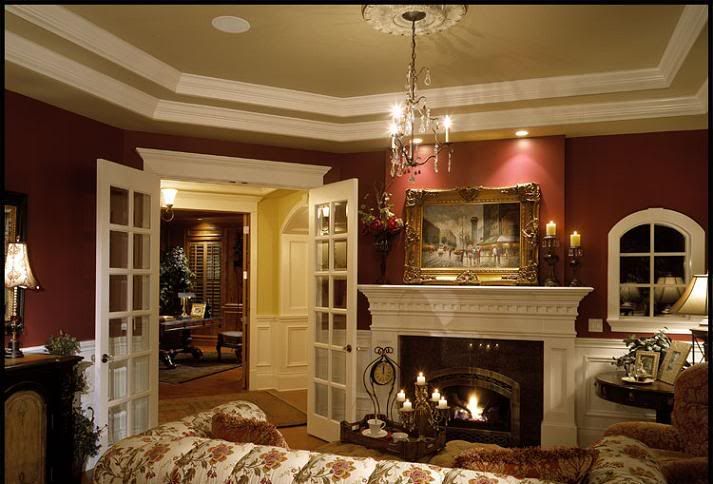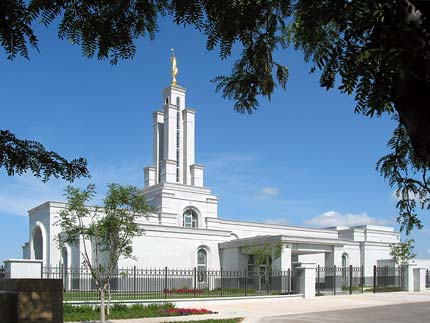Illustration: Otto Eckmann. Wallpaper design, c1899
Otto Eckmann can be counted as one of the most interesting and diverse designers of his period. When he took up a second career in design at the end of 1894, he put a symbolic end to his first career as a fine art painter by auctioning off his entire collection of work, so as to start anew and fresh as a decorative artist.
Eckmann was involved in the design work of textiles and in particular embroidery and tugs, ceramics, metal, furniture, wallpaper and graphics. It is with wallpaper design that we are concerned with in this particular article. All of the wallpapers featured here were produced by Eckmann in around 1899. They are a stunning display of an individual's approach to wallpaper design and shows that Eckmann was neither overly influenced nor cowed or intimidated by the long history and traditions of the wallpaper industry, particularly by an individual who was approaching commercial design from a fine art background.
Illustration: Otto Eckmann. Wallpaper design, c1899
It could be said that it was actually Eckmann's artistic experience that gave him a particular edge over some of his rivals. It was the individual approach to both styling and composition that made his work appealing for both its novelty and its decorative potential. It was this external attitude that often produced work by artists and designers that stood out when they approached another and relatively unfamiliar discipline, achieving results of unexpected and unusual directions. However, this was not always the case and there were some spectacularly dire results of cross-discipline experiments. These failed ventures have proved to be of a serial nature and have dogged the decorative arts world down to our own contemporary era, mostly in the form of celebrity design launches.
Illustration: Otto Eckmann. Wallpaper design, c1899
Eckmann himself was not of this ilk and the wallpaper design work that he produced from the 1890s until his death in 1902 at the incredibly early age of thirty seven, show a clear definition of his approach to the decorative arts. It has been said by many that the artist turned designer was heavily influenced by the Japanese artistic and decorative format, and while this is true to a certain extent, it can only ever be classed as one thread of the creative work of Eckmann, not the only one.
It is the graphic work produced during the last years of his life that tended to influence the rest of his work through the various disciplines. This is an interesting development as many of the decorative arts had come to rely on the defined graphic quality of flat design. This came to be particularly true at the end of the nineteenth century when considering the textile and wallpaper disciplines for example. A number of illustrators and graphic artists became involved in wallpaper design at the turn of the century and there was a relatively busy and productive cross-pollination of ideas and theories that was to include the whole world of poster art, text, book illustration and wallpaper design.
Illustration: Otto Eckmann. Margueriten wallpaper design, c1899
It was this fruitful period that coincided with the general European Art Nouveau movement, known more specifically in Germany as the Jugendstil of which Eckmann became one of the leading lights. It was with the help of the individual styling of Eckmann's work along with that of others in Germany, that the Jugendstil made its own unique contribution to that of Art Nouveau, often countering to a certain extent, the inbuilt and often overly conscious flamboyance of the French and Belgian versions of the movement.
As with so many scenarios of the early death of a talented individual, it would have been interesting to have known how Eckmann had he lived past 1902, would have affected and influenced not only the dynamics of German decorative arts under the Jugendstil, but much further a field towards that of German Modernism. How his own personal career would have faired during the first and most important half of the twentieth century, we will never know.
Illustration: Otto Eckmann. Self Portrait
Reference links:Modern Style: Jugendstil/Art Nouveau 1899-1905 Jugendstil, Graphik und Druckkunst
Jugendstil, Graphik und Druckkunst Art nouveau in Munich: Masters of Jugendstil from the Stadtmuseum, Munich, and other public and private collections
Art nouveau in Munich: Masters of Jugendstil from the Stadtmuseum, Munich, and other public and private collections Jugendstil Art Nouveau
Jugendstil Art Nouveau Ornament und Illustration um 1900: Handbuch fur Bild- und Textdokumente bekannter und unbekannter Kunstler aus der Zeit des Jugendstil (Asthetik der Alltagswelt) (German Edition)
Ornament und Illustration um 1900: Handbuch fur Bild- und Textdokumente bekannter und unbekannter Kunstler aus der Zeit des Jugendstil (Asthetik der Alltagswelt) (German Edition)









 Southern Textiles Ambrose Falls Bedding brings together beautiful autumn colors highlighted by a woven paisley comforter with lime greens, golds, blues, and orange spice
Southern Textiles Ambrose Falls Bedding brings together beautiful autumn colors highlighted by a woven paisley comforter with lime greens, golds, blues, and orange spice Southern Textiles Bridges Bedding is a simple ensemble consisting of woven fabrics in solid saddle tan and black
Southern Textiles Bridges Bedding is a simple ensemble consisting of woven fabrics in solid saddle tan and black Southern Textiles Hobie Bedding Red, white, and blue stripes in all cotton give this contemporary ensemble the patriotic feeling of the 4th of July
Southern Textiles Hobie Bedding Red, white, and blue stripes in all cotton give this contemporary ensemble the patriotic feeling of the 4th of July Chrysanthemum is a large sale all over woven floral in black and gold on a luminescent ground. Different woven fabrics are coordinated to enhance this opulent ensemble and the decorative pillows are accented with Asian inspired details.
Chrysanthemum is a large sale all over woven floral in black and gold on a luminescent ground. Different woven fabrics are coordinated to enhance this opulent ensemble and the decorative pillows are accented with Asian inspired details. Lawrence Silence Bedding Collection
Lawrence Silence Bedding Collection
 La Salle Triple Dresser- Cafe Noir Finish
La Salle Triple Dresser- Cafe Noir Finish

 The Oak River Collection imbues your bedroom with a classic country look. A warm Oak finish and delicate traditional drawer pulls add grace to this collection. The complete look is one of country homes of the past. The Oak River Dresser and Mirror make a perfect pair in any bedroom. The dresser has nine drawers, and the mirror features a simple, elegant arch at the top.
The Oak River Collection imbues your bedroom with a classic country look. A warm Oak finish and delicate traditional drawer pulls add grace to this collection. The complete look is one of country homes of the past. The Oak River Dresser and Mirror make a perfect pair in any bedroom. The dresser has nine drawers, and the mirror features a simple, elegant arch at the top.










 Southern Textiles Larisa Bedding is a beautiful French vanilla shantung comforter made in a cotton poly blend that easily lends itself to a variety of room décor. The vertical stripes of the bedskirt and square accent pillows lead the eye to the splash of red and the look of a gold embroid
Southern Textiles Larisa Bedding is a beautiful French vanilla shantung comforter made in a cotton poly blend that easily lends itself to a variety of room décor. The vertical stripes of the bedskirt and square accent pillows lead the eye to the splash of red and the look of a gold embroid Southern Textiles Lattice Bedding is a soft teal lattice work design on a chocolate brown background with teal micro suede accent pillows
Southern Textiles Lattice Bedding is a soft teal lattice work design on a chocolate brown background with teal micro suede accent pillows Southern Textiles Legacy Bedding is a sophisticated ensemble in rich golden hues with detailed cording and fringe
Southern Textiles Legacy Bedding is a sophisticated ensemble in rich golden hues with detailed cording and fringe Southern Textiles Mabry Bedding is a contemporary set featuring a block design in sangria and khaki
Southern Textiles Mabry Bedding is a contemporary set featuring a block design in sangria and khaki The Southern Textiles Malibu Bedding Ensemble is a California or Florida cotton print concept of the magnolia flower, conventionalized. The creamy-yellow petals of the flower motif are punctuated by bright red-orange centers with multi-green leaves super-imposed on a grayed blue ground.
The Southern Textiles Malibu Bedding Ensemble is a California or Florida cotton print concept of the magnolia flower, conventionalized. The creamy-yellow petals of the flower motif are punctuated by bright red-orange centers with multi-green leaves super-imposed on a grayed blue ground. Southern Textiles Paddock Bedding is a large contemporary paisley print in avocado green and chocolate brown with muted yellow shantung accents and stripes with the same colors combined.
Southern Textiles Paddock Bedding is a large contemporary paisley print in avocado green and chocolate brown with muted yellow shantung accents and stripes with the same colors combined. Southern Textiles Prescott Bedding is a gold comforter background with large Chrysanthemum flowers in colors of bronze and light beige.
Southern Textiles Prescott Bedding is a gold comforter background with large Chrysanthemum flowers in colors of bronze and light beige.
 If you want a modern bed with a traditional feel, check out this Contemporary Platform Bed in Cherry finish. It has the headboard shape of a traditional sleigh bed with modern cutouts and an angular platform base. The finish is rich and stunning, and this Contemporary Platform Bed is a beautiful way to modernize your bedroom. Add additional pieces from this Collection for a complete set.
If you want a modern bed with a traditional feel, check out this Contemporary Platform Bed in Cherry finish. It has the headboard shape of a traditional sleigh bed with modern cutouts and an angular platform base. The finish is rich and stunning, and this Contemporary Platform Bed is a beautiful way to modernize your bedroom. Add additional pieces from this Collection for a complete set. If you're looking to redecorate your child's room with class and elegance, this Contemporary Kids Full Bed is perfect for you. You can't go wrong with its subtle and sophisticated style! Add other pieces from this collection to complete the look.
If you're looking to redecorate your child's room with class and elegance, this Contemporary Kids Full Bed is perfect for you. You can't go wrong with its subtle and sophisticated style! Add other pieces from this collection to complete the look. Modern platform bed with mat finish, has one drawer on the side and two drawers in front of the bed. Optional two drawer nightstand. Eight drawer dresser with st steel handles. Stylish mirror has wood frame.
Modern platform bed with mat finish, has one drawer on the side and two drawers in front of the bed. Optional two drawer nightstand. Eight drawer dresser with st steel handles. Stylish mirror has wood frame. Modern contemporary bed in lacquer finish
Modern contemporary bed in lacquer finish







